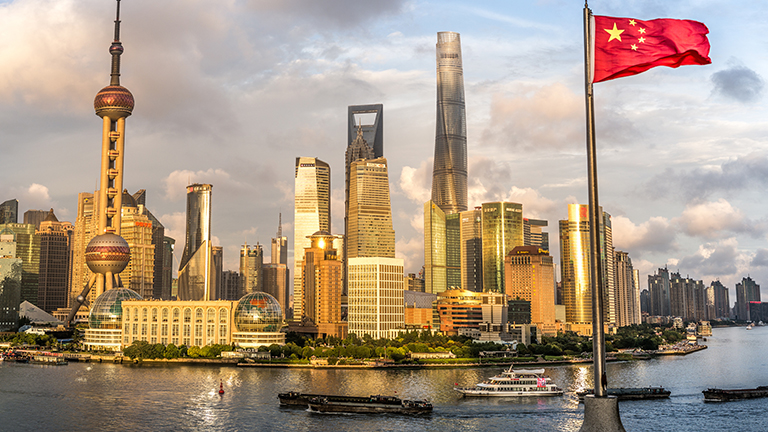How is China going to get around US protectionism?
China has announced monetary and fiscal stimulus measures – but this may prove insufficient to protect China’s growth from a surge in US protectionism.

In late September, an emergency meeting convened by the People's Bank of China (PBoC) and the Financial Regulator led to significant policy changes, including a cut to the main policy rate and reserve requirement ratio (RRR), and new lending facilities were introduced to bolster the A-share market. These measures aimed to provide some immediate relief and prepare the financial sector to facilitate forthcoming fiscal stimulus – specifically increased bond issuance.
Two days later, the Politburo's monthly meeting confirmed as much. The September meeting, unusually, concentrated on economic issues and communicated the decision to "increase the intensity" of monetary and fiscal policies. The government extended deadlines for local governments to manage their local financing vehicles’ (LGFVs) debt, and approved the issuance of CNY2tn in bonds annually from 2024 to 2026, and an additional RMB800bn from the annual special purpose bond (SPB) quota to replace LGFV debt. Still, the central government refused to use the central government balance sheet to this end.
Worryingly, these swap programs fail to significantly strengthen the financial positions of local governments in the short term, particularly considering declining land sales and tax revenues that hhavecreated a funding gap and triggered austerity. Nor does it lay the groundwork for a more durable solution to the fiscal challenges arising from revenue-sharing between central and local governments.
Moreover, there is lingering concern that Beijing may be underestimating the extent of hidden debt; the Ministry of Finance has stated that their estimates conclude that only a further CNY14.3tn in LGFV debt would need to be converted into local government debt – which is just a fraction of the consensus estimates of LGFV debt between CNY50tn and CNY70tn.
Promisingly, though, whereas August data was insipid, the high-frequency macroeconomic data for September and October implies that a more forceful fiscal support at this juncture wasn’t necessary for China to hit its growth target of “around 5%” in 2024.
Next year may be a different story – but the economy seems to have hit a cyclical bottom in August. Importantly, most of these data points were released after the Politburo meeting occurred in late September but before the conclusion of the NPC session. So, back when the politburo met, officials would have been acutely aware of the underwhelming GDP growth rate of 4.6% y/y. Leadership would also have noted that the quality of growth had declined sharply, with final consumption contributing a mere one-third of GDP growth.
Trade too had emerged as the primary growth driver in Q3, accounting for 42% of economic expansion, but leadership would have been bracing for rising trade tensions. And, perhaps worst of all, August data had weakened yet again. Meanwhile, deflationary pressure was accumulating. All of this justified a forceful response. Yet, by the time the NPC meeting concluded, data from September had shown notable improvement.
Steve Barrow, Head of Standard Bank G10 Strategy, said with Trump's second presidency now confirmed, Beijing will be closely examining what this means for Sino-US relations and the broader global landscape. On trade, Trump has pledged to impose tariffs of at least 60% on Chinese imports, which could drastically affect US-China trade and global economic flows. If he follows through on this, China will face a dilemma: either to exercise restraint or adopt a more confrontational approach, potentially leveraging its strategies against economic coercion, which could negatively affect US businesses.
“Regarding technology and export controls, the Biden administration has put extensive restrictions on various Chinese industries. It remains unclear whether Trump will stay this course or revert to a more erratic strategy, such as during his first term. At the same time, US diplomacy is likely to become more inwardlooking. Such a shift could give Beijing greater opportunities to assert itself. China will likely present itself as a proponent of free trade and multilateralism, contrasting with US protectionism and unilateralism, which may enhance its influence in global governance, said Steve Barrow.








